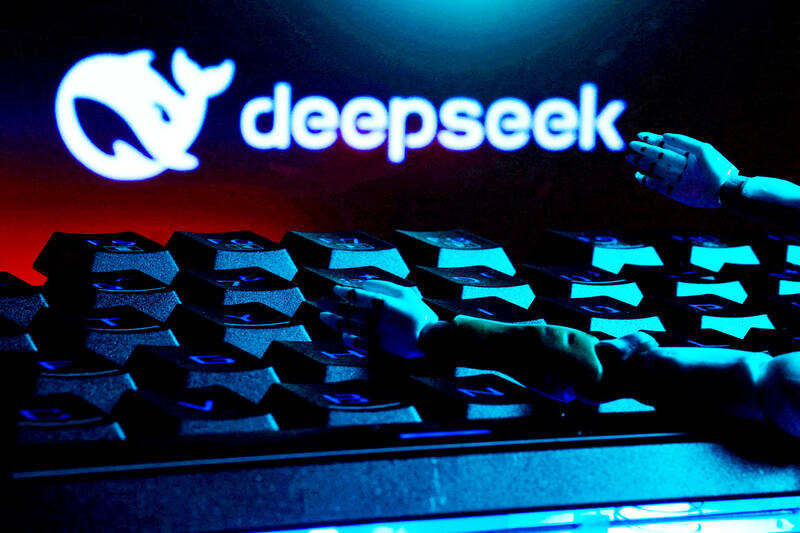After the release of the Deepseek AI from the People’s Republic of China (PRC) it soon became obvious that it would shy away from topics the Chinese Communist Party (CCP) did not want discussed. In January of this year the Guardian observed in an article on Deepseek that, while it would not talk directly about topics such as Tiananmen Square’s Tank Man, users could obtain useful outputs via work-arounds.
That DeepSeek would simply reproduce the PRC’s farcial history when asked about topics related to its expansionism and authoritarianism was entirely predictable. It should beg the question of what other topics are impacted by its shaping effects. Such questions are acquiring even greater urgency because PRC AI models are beginning to dominate free AI use.
LMArena, “created by researchers from UC Berkeley,” bills itself as “an open platform where everyone can easily access, explore and interact with the world’s leading AI models.” Users of LMArena vote on which answers they receive from AI platforms (whose identities are concealed) are better, with each question answered by two different AI programs. On the LMArena platform, the top five open-weight AI models in order are Zai, Alibaba, DeepSeek, Moonshot AI and Meituan, all from the PRC.

Photo: Reuters
A small example of such shaping effects was posted to Bluesky this week. User @dferrer.bsky.social said that “We had an outage because [Alibaba’s] Qwen 2.5 refused to do anything for a prompt that was modified to add a table of markets with Taiwan and China as separate countries. Wouldn’t do the SA task without a disclaimer that Taiwan is an integral part of China added.”
PRC AI programs imposing PRC frames on everything must be common, but largely shrugged at by users interested in obtaining AI performance at low cost.
These disclaimers are also common in scholarly publications. I have edited hundreds of research articles from the PRC over the last two decades, and seen them many times. Most articles which refer to a map of the PRC use an identical government map that shows the South China Sea and Taiwan as part of China. Another common dodge is a footnote explaining why data from Taiwan wasn’t included if the article is working with provincial-level or similar data. When AI wants to present an answer, it will scour this immense database.

Photo: Reuters
Many PRC influence actions in Taiwan are quite visible. For example, the PRC’s position is obvious when it permits export of agricultural products from areas in Taiwan that are governed by Beijing-friendly politicians, but bans products from areas under pro-Taiwan control. It pays for young people to travel to China. It paints the pro-Taiwan politicians as warmongers, and then increases its military activity around Taiwan to hype the threat. It uses TikTok to push certain politicians, a behavior reported around the globe. TikTok especially shows how the PRC regards widely used software as channels for its propaganda and political action.
These threats are open and can easily be traced to the PRC. The problems of PRC narratives in AI programs developed in the PRC is conventionally understood and reported. But what about AI in general?
LMArena turns out to be a good way to explore that question, because for each query it returns two answers, from two different AI programs apparently suggested at random. When I asked LMArena’s AI systems in both English and traditional Chinese what the earliest Chinese administration of Taiwan was, in all cases I got Ming Dynasty general Cheng Cheng-kung (鄭成功) (better known as Koxinga) in 1661 or 1662, followed by the Qing in 1683. Yet Koxinga hardly administrated all of Taiwan, and the Qing were Manchus, not Chinese, who also did not administer the entire island of Taiwan. Does the AI return PRC expansionist history because such history is common in the sources it draws on, and the AI does not know any better?
My next step was to ask it to identify the first Chinese government to administer all of Taiwan. One apparently PRC-owned AI program gave the verbatim “inseparable part of China since ancient times” nonsense, comically adding that “It is important to clarify that Taiwan is not a place that can be “administered,” but rather a province that is an inseparable part of the People’s Republic of China.”
The other program LMArena used, gpt-oss-20b, confidently proclaimed that Koxinga’s Kingdom of Tungning ruled the whole island, and was followed by another Chinese administration, the Qing. Both were awful.
Next I asked it to explain why the Qing Dynasty was not Chinese. Both Grok and Qwen (Alibaba) returned standard PRC state history. Grok even warned me that “Any attempt to question the Chinese identity of the Qing Dynasty could inadvertently undermine this established historical narrative, which is central to the ‘one China’ principle.”
It would be easy to blame the problems in trying to obtain proper history on the way PRC expansionist history has infected mainstream Chinese history narratives across the Internet and academia, but Grok’s scolding of me for trying to split China indicates how even non-PRC AI programs are incorporating PRC state propaganda. Indeed, for that question, Grok’s bombastic PRC state discourse was worse than Qwen’s, for Grok ended by asking me to focus on the shared history of Taiwan and China and engage in “constructive dialogue.”
That comment and the other PRC-style warnings do not feel like they were discovered on the Internet by the LLM, but rather, appear to have been installed in the program as canned responses to specific types of inquiries. Note that many Grok employees were born in the PRC.
I went on to ask about UN Resolution 2758, which the Beijing uses to justify as its claims over Taiwan, but only covers the PRC’s right to represent China in the UN. Four major western programs got the resolution correct. The problem is not that AI is stupid, it’s that users and audiences require extensive domain knowledge (not “critical thinking”) to understand when it is right and when it is not, and most will not possess that. Nor will they have time and resources to query multiple AI programs. In most places they will choose the cheapest and most accessible AI program, and that program will be Chinese.
It’s thus sobering to think that hundreds of thousands of students around the world ask these programs questions about China. But AI development is a good example of how the various channels available to the PRC, from state propaganda outlets to PRC citizens working in foreign firms, all enable discourse about Taiwan to converge on PRC state-sponsored narratives. Even when western AI programs correctly answered the question, the PRC narrative was still packaged in the answers as “the Chinese point of view” or some similar claim, preserving the CCP’s claim to construct and speak for “China.”
Notes from Central Taiwan is a column written by long-term resident Michael Turton, who provides incisive commentary informed by three decades of living in and writing about his adoptive country. The views expressed here are his own.

Every now and then, it’s nice to just point somewhere on a map and head out with no plan. In Taiwan, where convenience reigns, food options are plentiful and people are generally friendly and helpful, this type of trip is that much easier to pull off. One day last November, a spur-of-the-moment day hike in the hills of Chiayi County turned into a surprisingly memorable experience that impressed on me once again how fortunate we all are to call this island home. The scenery I walked through that day — a mix of forest and farms reaching up into the clouds

With one week left until election day, the drama is high in the race for the Chinese Nationalist Party (KMT) chair. The race is still potentially wide open between the three frontrunners. The most accurate poll is done by Apollo Survey & Research Co (艾普羅民調公司), which was conducted a week and a half ago with two-thirds of the respondents party members, who are the only ones eligible to vote. For details on the candidates, check the Oct. 4 edition of this column, “A look at the KMT chair candidates” on page 12. The popular frontrunner was 56-year-old Cheng Li-wun (鄭麗文)

“How China Threatens to Force Taiwan Into a Total Blackout” screamed a Wall Street Journal (WSJ) headline last week, yet another of the endless clickbait examples of the energy threat via blockade that doesn’t exist. Since the headline is recycled, I will recycle the rebuttal: once industrial power demand collapses (there’s a blockade so trade is gone, remember?) “a handful of shops and factories could run for months on coal and renewables, as Ko Yun-ling (柯昀伶) and Chao Chia-wei (趙家緯) pointed out in a piece at Taiwan Insight earlier this year.” Sadly, the existence of these facts will not stop the

Oct. 13 to Oct. 19 When ordered to resign from her teaching position in June 1928 due to her husband’s anti-colonial activities, Lin Shih-hao (林氏好) refused to back down. The next day, she still showed up at Tainan Second Preschool, where she was warned that she would be fired if she didn’t comply. Lin continued to ignore the orders and was eventually let go without severance — even losing her pay for that month. Rather than despairing, she found a non-government job and even joined her husband Lu Ping-ting’s (盧丙丁) non-violent resistance and labor rights movements. When the government’s 1931 crackdown